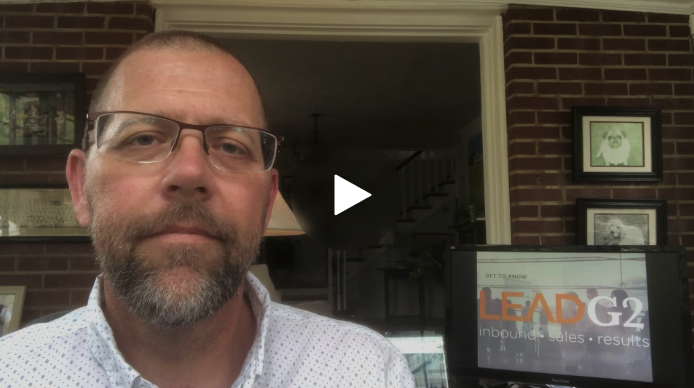5 Tips to Activate Your Blog Content and Boost Your Conversions
You have a blog. Great. Are you analyzing it? Are you tracking its performance? Do you know if your efforts are paying off? Time is money, and if...
2 min read
 Dean Moothart
:
August 9, 2019
Dean Moothart
:
August 9, 2019

I talk to a lot of small- to medium-sized professional services firms who are growing. Their revenue is going up in the right direction; they have a lot of activity and are busy. But when they take a step back to dive into their revenue numbers, there's one thing that is very scary.
A huge percentage of their revenue is being driven by just one client. I've seen this being as large as 50-60% of total revenue coming from one business. This can be a mixed blessing, a double-edged sword. They have a great client driving all of this revenue, but it's also driving the business. If something happened to this one client, then the business would be crippled.
When I'm speaking with business owners who find themselves in this situation, I'm looking at what we can do to minimize this risk. How can we change this 50-60% of the revenue being driven by one client, and get this down to 40%, 30%, or 25%, while still keeping top-line revenue growing in the direction we want to see?
First, leverage the success you've had with this large client. You've obviously been successful at addressing their needs with your solutions. Look at this, then determine the value that you can leverage with other companies.
Once you've identified that, define your target persona by looking at similar companies and similar decision-makers you'd want to do business with. You'll want to conduct research on your target persona.
Target persona research might include:
Once you've done this research to define your target persona, develop an inbound marketing strategy to create content to share online, email campaigns, social media campaigns, and even paid ads, that are going to drive people to your site and share how you can help solve their problems (just like you are with that big client).
Another thing your target persona will help with is building an account list that you can use to target some outbound sales initiatives as well. After your research, determine the people that make sense —main accounts and decision-makers — that you can target.
The last thing is to build a sales playbook. We want to be very deliberate with how we are engaging with the people we attract to our site and the accounts we target through outbound sales efforts. The sales playbook allows us to leverage the content that we've built for the inbound marketing initiative and leverage it and integrate it into our outbound prospecting initiatives.
When talking to prospects, think about the valid business reasons you can weave into the conversation to encourage someone to meet with you.
As you are doing both inbound and outbound, it's all about not giving up, being persistent and professional, and offering solutions as an informative resource for your prospect.
By implementing the above ideas into your marketing and sales strategies, it will help your company drive more qualified leads, engage with more prospects, set more appointments, and close more deals to minimize the risk of having one client be the driving force behind your revenue.

You have a blog. Great. Are you analyzing it? Are you tracking its performance? Do you know if your efforts are paying off? Time is money, and if...

“Leads are the metric that, as marketers, we rely on. Because leads mean money.” This is a quote from Kip Bodnar of HubSpot. HubSpot knows lead...
![Don't Overlook This Resource to Help Drive More Revenue from Marketing Campaigns [VIDEO]](https://leadg2.thecenterforsalesstrategy.com/hubfs/Screen%20Shot%202019-07-18%20at%202.32.22%20PM.png)
One of the biggest resources that marketing teams have is access to their sales team. That's right! The sales team is a key resource for successful...